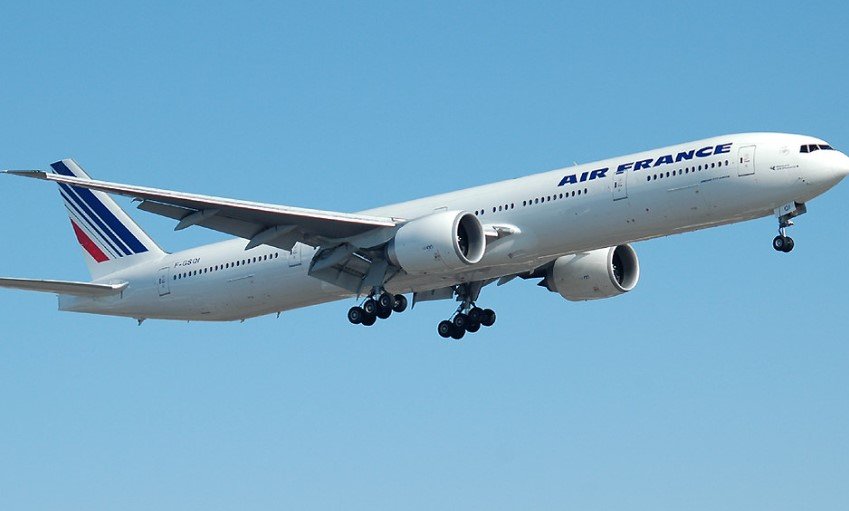After brief halt triggered by Iran-Israel conflict, the French carrier restores key Middle East routes as skies begin to clear
Air France is restarting its routes to Riyadh, Dubai, and Beirut this week, just days after grounding them amid fears that a wider war in the Middle East was imminent. The decision follows a tense pause in operations caused by Israeli airstrikes and American bombing runs on Iran’s nuclear sites.
The airline confirmed it will resume services to Saudi Arabia and the UAE on Wednesday, and to Lebanon by Thursday. It’s a cautious sign that carriers are beginning to recalibrate risk in the aftermath of the 12-day conflict that rattled nerves across the region—and sent shockwaves through aviation corridors.
A Reluctant Pause After The Missiles Fell
Just 72 hours earlier, Europe’s major airlines were scrambling.
Paris-based Air France was one of several carriers—including British Airways, Lufthansa, and Emirates—that suspended operations into large swaths of the Middle East after Israel launched a wave of strikes into Iranian territory, prompting retaliation and U.S. intervention. American jets, targeting Iran’s Fordow, Isfahan, and Natanz nuclear facilities, raised alarms in international flight management circles.

Aviation officials feared airspace closures, long-haul reroutes, and possible misidentifications by missile defense systems.
So the response was immediate.
“Safety is our absolute priority,” an Air France spokesperson said then, adding that the airline was “monitoring the situation closely.” Most carriers rerouted long-haul Asia flights to avoid Iranian and Iraqi skies altogether.
Now, the skies are a little less tense.
Routes Return, But Not Without Caveats
Flights to Riyadh and Dubai will resume first, on June 25. Beirut follows on June 26.
But this isn’t business as usual.
Air France hasn’t confirmed whether all pre-conflict frequencies will return immediately or if some flights will remain suspended. It’s also unclear if crew layovers will be restored or replaced with turnaround operations for the time being. That decision may hinge on what intelligence agencies are feeding into the French civil aviation regulator.
Aviation analyst Alex Macheras summed it up plainly: “Airlines don’t like surprises. Right now, they’re watching Iran closely, but the fact that Air France is returning is a good sign.”
Gulf Airports: Nervous But Operational
Despite the chaos, Gulf airports remained open.
Dubai International Airport—one of the world’s busiest—maintained traffic with only minor disruptions during the height of the Iran-Israel escalation. But the mood there, and in other Gulf hubs like Doha and Riyadh, was tense.
These hubs are no strangers to conflict-era reroutes. The 2019 tanker attacks, Houthi missile barrages over Saudi Arabia, and the 2020 killing of Qassem Soleimani all prompted temporary flight changes.
This time, though, it was more sudden.
• Emirates continued to fly during the recent tensions, but modified some routes and used extra fuel to keep planes out of dangerous airspace.
Air France, being a European carrier subject to stricter regulatory oversight, had to wait for a green light from DGAC France and EASA before returning.
Beirut: A Sensitive Route Reopened
The Beirut leg—resuming June 26—is perhaps the most delicate.
Lebanon lies in close proximity to Israeli and Syrian airspaces and sits on the geopolitical edge of nearly every conflict in the region. The airport has long been viewed as a litmus test for regional risk. When Air France paused flights there, it underscored the seriousness of the threat.
Yet on Monday, Lebanese skies looked calmer than they had in weeks. No fresh Israeli strikes. No rocket fire from Hezbollah. That relative silence gave Air France enough reassurance to schedule Thursday’s return.
Even so, local ground crews remain on alert.
How Airlines Judge Danger
The process behind halting—and restarting—flights is murky to most travelers, but crucial behind the scenes.
A mix of national aviation regulators, intelligence services, and corporate risk officers sit in judgment of fast-moving events. That’s especially true for French carriers, who must coordinate with DGAC, France’s national civil aviation authority, and often consult with the Ministry of Defense before making decisions.
If the skies above a region are deemed high-risk, they may issue NOTAMs (Notices to Air Missions) that warn pilots to avoid specific routes or airspaces altogether.
Here’s a basic table summarizing major factors influencing airline decisions in crisis zones:
| Risk Factor | How It Affects Flights |
|---|---|
| Missile activity | Immediate suspension or rerouting |
| Military airspace closures | Diversions or longer flight paths |
| Political uncertainty | Staff evacuation and route delays |
| Insurance premium hikes | Temporary cancellation of flights |
| Airport infrastructure damage | Full suspension of service |
Sometimes, it’s not about direct hits, but near-misses. Even one missile flying within radar range of a flight path can trigger a reevaluation.
A Regional Pattern Taking Shape
Air France isn’t alone in testing the waters.
Etihad and Qatar Airways never fully pulled out but adjusted timings. Lufthansa is expected to follow Air France in resuming full service later this week, pending updates from German regulators. British Airways is still holding, particularly over concerns about Tehran’s air defense systems being on edge.
Meanwhile, U.S. carriers remain locked out due to long-standing bans on direct flights into Lebanese and Iranian airspace. But that hasn’t stopped industry eyes from watching what Air France does next.
They’ve been here before. But each time, the region’s shifting alliances and quicker escalations make forecasting harder.
And yet, the flights continue. Sometimes cautiously. Sometimes quietly. But they continue.
